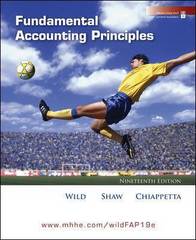Question
AA Co. manufactures computer parts and operates two subsidiaries, S1 and S2. S1 is a component manufacturing subsidiary and S2 is an assembly and final
AA Co. manufactures computer parts and operates two subsidiaries, S1 and S2. S1 is a component manufacturing subsidiary and S2 is an assembly and final product subsidiary. Both subsidiaries produce one type of output only. Subsidiary S2 requires one component from Subsidiary S1 for every unit of computer part produced. Subsidiary $1 transfers to Subsidiary S2 all of the components needed to produce computer parts. Subsidiary S1 also sells components on the external market. The following budgeted information is available for each subsidiary: Market price per component Market price per unit of computer part Production cost per component Assembly cost per unit of computer part Non production fixed costs External customer demand Production capacity $1 (RM) 800 600 1,850,000 10,000 units 42,000 units $2 (RM) 1,150 400 1,450,000 32,000 units The production cost per component is 73% variable while the fixed production costs are absorbed based on budgeted output. In addition, Subsidiary S1 sets a transfer price at marginal cost plus 70%. Required: (1) Calculate the before tax profits generated by S1 and S2. Would the transfer price policy between the divisions motivate transfer pricing objectives? (11 marks) (ii) Discuss TWO (2) problems that are associated with transfers when a transfer pricing policy such as that applied between $1 and S2 is initiated. (6 marks) (b) ZZ Co. is considering whether to undertake an investment in a particular project. An initial cost of RM12,000,000 will be required and a net cash inflow amounting to RM6,000,000 is expected to arise in each year of the four years of life of the project. The activities involved in the project will cause the environment to become polluted due to the discharge of waste substances from operations, resulting in health diseases. It is therefore estimated that at the end of year four a cash outlay of RM5,000,000 would be required to restore the environment to its original condition. However, this would only clear up 80% of the pollution caused by the company. The remaining 20% of the pollution caused as a result of the project could be cleared up by a further cash outlay of RM3,000,000. ZZ Co.'s cost of capital is 10%. Required: Evaluate the project (with necessary computations) and stating your reasons, discuss TWO (2) points on whether the company should spend the further RM3,000,000 in order to eliminate the remaining 20% of pollution. (8 marks) [Total: 25 Marks]

Step by Step Solution
There are 3 Steps involved in it
Step: 1

Get Instant Access to Expert-Tailored Solutions
See step-by-step solutions with expert insights and AI powered tools for academic success
Step: 2

Step: 3

Ace Your Homework with AI
Get the answers you need in no time with our AI-driven, step-by-step assistance
Get Started


